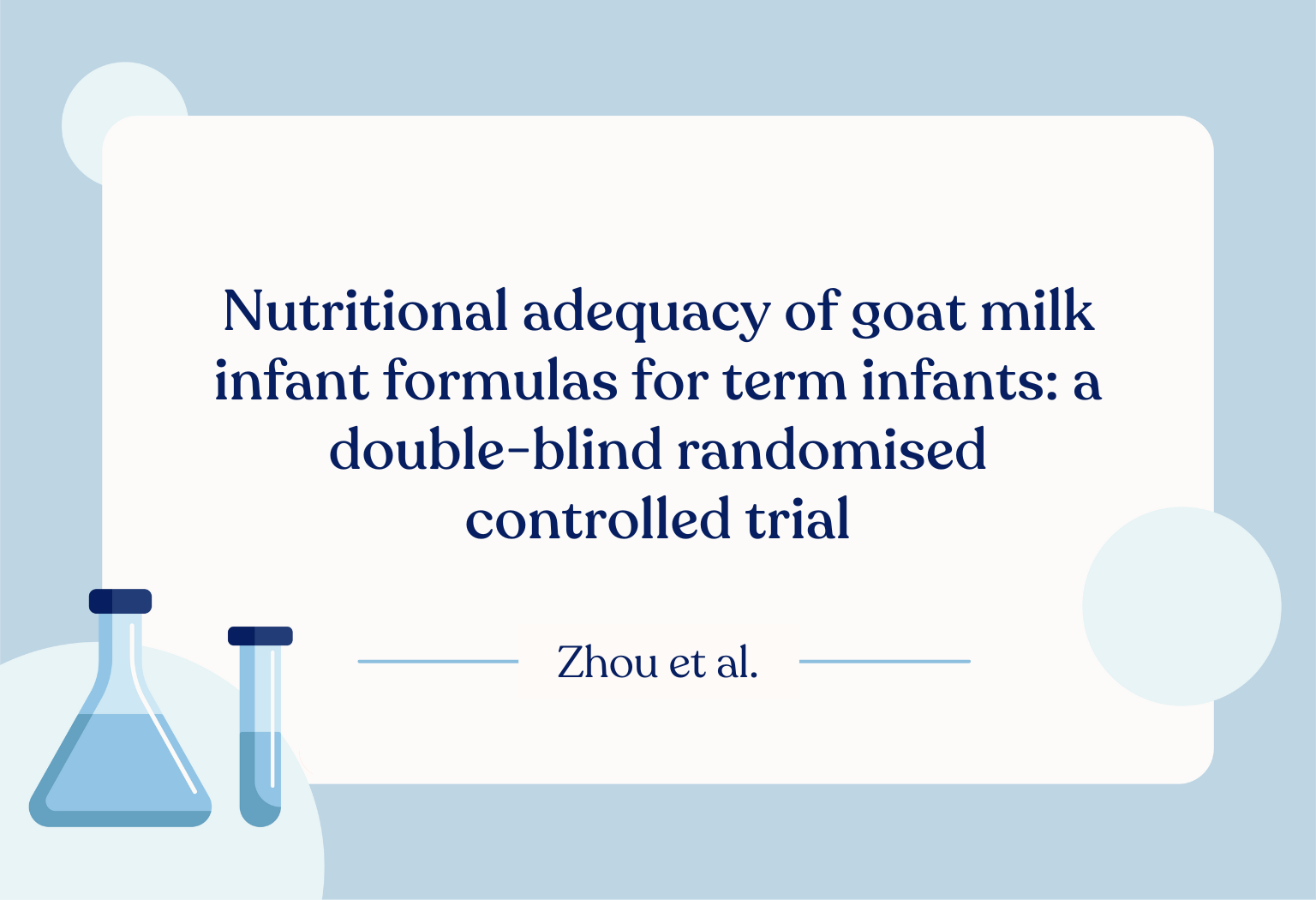Find out more about Kendamil's Goat Milk Formula Range
200 formula fed infants were randomised to receive either goat’s milk or cow’s milk infant formula from 2 weeks of age to at least four months. The goat’s milk formula was manufactured by Dairy Goat Co-operative (N.Z.) without added whey proteins. The cow’s milk formula was supplied by Nutricia and contained skimmed cow’s milk and added whey proteins. Parents and carers were asked to feed their infants the study formula exclusively until at least four months and continue to 12 months with the addition of complementary foods. Another comparison group of 101 breast-fed infants were also included. They were requested to exclusively breastfeed exclusively until 4-6 months of age. Weight, length and head circumference were measured at 2 weeks and 1, 2, 3, 4, 6 and 12 months of age to compare between the formulas. Standard blood markers were also measured to detect deficiencies such as anemia. In the results of this study, weight, length, head circumference and weight for length did not differ between the two formula-fed groups. This indicated that the goat’s milk formula provided the same growth rate as the cow’s milk formula. In comparison to the breast-fed infants, the infants fed with the goat’s milk formula had increased weight at 3-6 months and infants fed with the cow’s milk formula had increased weight from 2-12 months. This is consistent with previous studies comparing breast milk and cow’s milk formula4. There were differences in the values of some of the amino acids and blood nutrition markers between the goat’s milk and cow’s milk formulas, but all of the values were within the normal reference ranges for infants and therefore did not indicate any deficiencies resulting from goat’s milk formula. There were no differences in the incidence of serious adverse events, measures of general health, or medically diagnosed food allergy between the two formulas, and also between the breast-fed group with the exception of having lower rates of oral thrush than the formula groups. There were no significant differences in sleep measures between the two formula-fed groups. The incidence of parentally reported blood-stained stools was higher in the goat’s milk formula group, however there were no indications of gastrointestinal problems in these infants so the importance of this finding is not clear. Furthermore, none of these infants had iron-deficiency anemia which would indicate persistent bleeding. Stool frequency was also lower in both of the formula-fed groups in comparison to the breast-fed group. Overall, the goat’s milk formula provided growth and nutritional outcomes in infants which were comparable to a standard whey-based cow’s milk formula. One potential advantage of the goat’s milk formula over cow’s milk formula was that there was no difference in weight between the goat’s milk formula infants compared to breast-fed infants at 12 months, whereas those fed cow’s milk formula had increased weight at 12 months. However, the formula-fed infants did not switch to a follow-on formula with higher protein concentration, as is often recommended, which may be responsible for differences in weight at the older timepoints. Although this trial suggests growth is normal in infants fed with goat’s milk formula, a much larger trial is needed to confirm the effects on gastrointestinal function, allergy status, and general health. As there appears to be demand for a goat’s milk infant formula, further studies will be worthwhile to confirm its safety.References
- Basnet S, Schneider M, Gazit A, Mander G, Doctor A. Fresh goat's milk for infants: myths and realities—A review. Pediatrics. 2010 Apr;125(4):e973-7.
- Rutherfurd SM, Moughan PJ, Lowry D, Prosser CG. Amino acid composition determined using multiple hydrolysis times for three goat milk formulations. International Journal of Food Sciences and Nutrition. 2008 Jan 1;59(7-8):679-90.
- Grant C, Rotherham B, Sharpe S, Scragg R, Thompson J, Andrews J, Wall C, Murphy J, Lowry D. Randomized, double‐blind comparison of growth in infants receiving goat milk formula versus cow milk infant formula. Journal of paediatrics and child health. 2005 Nov;41(11):564-8.
- Dewey KG, Heinig MJ, Nommsen LA, Peerson JM, Lonnerdal B. Growth of breast-fed and formula-fed infants from 0 to 18 months: the DARLING Study. Pediatrics. 1992 Jun;89(6):1035-41.

